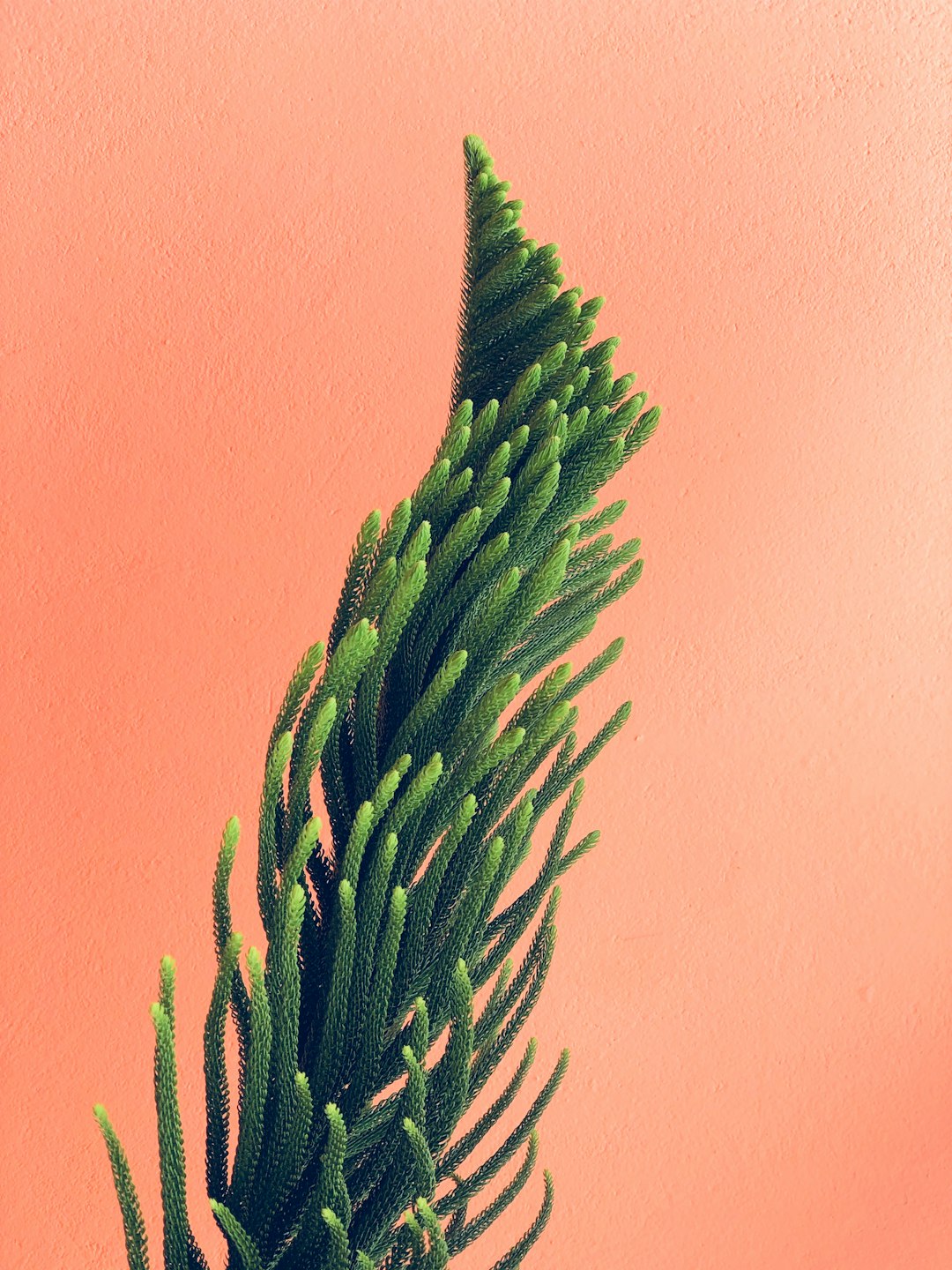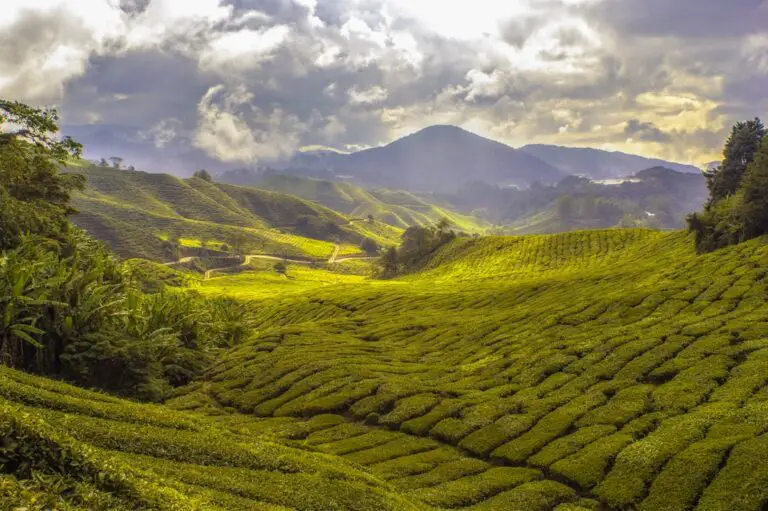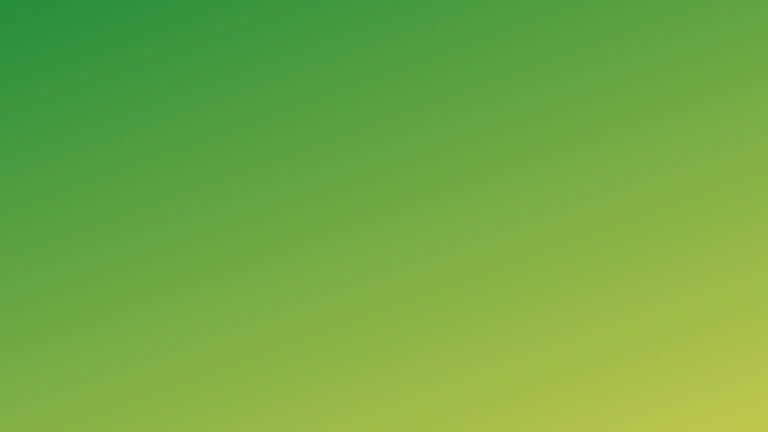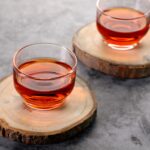Support our educational content for free when you purchase through links on our site. Learn more
Discover 10 Amazing Tea Plant Seeds for Your Garden! 🌱
Have you ever dreamed of sipping a cup of tea brewed from leaves you grew yourself? Imagine plucking fresh tea leaves from your very own garden and transforming them into a delightful brew! In this comprehensive guide, we’ll explore 10 incredible tea plant seeds that can elevate your gardening game and tantalize your taste buds. Whether you’re a seasoned gardener or just starting out, growing tea plants from seeds is a rewarding journey that connects you to centuries of tradition.
Did you know that tea is one of the most consumed beverages in the world, second only to water? Yet, many people are unaware of the rich history and cultivation techniques behind their favorite brews. From the delicate floral notes of green tea to the robust flavors of black tea, the possibilities are endless! So, grab your gardening gloves and let’s dive into the world of tea plant seeds!
Key Takeaways
- Explore 10 unique tea plant seeds that can be grown in your garden for a variety of flavors and health benefits.
- Learn how to source quality seeds from reputable suppliers to ensure a successful growing experience.
- Understand the importance of soil preparation and the ideal conditions for germinating tea seeds.
- Discover tips for nurturing your tea plants to promote healthy growth and maximize your harvest.
- Harvest and brew your own tea for a truly satisfying experience that connects you to the art of tea cultivation.
Ready to start your tea-growing adventure? 👉 Shop for tea plant seeds here and embark on a journey that will enrich your life, one sip at a time! 🍵✨
Table of Contents
- Quick Tips and Facts
- The Fascinating History of Tea Plant Seeds
- Top 10 Tea Plant Seeds You Should Consider Growing
- How to Source Quality Tea Plant Seeds
- Picking the Perfect Seeds from the Plantation
- Separating Sinkers from Floaters: A Seed Selection Guide
- Preparing the Ideal Soil Mixture for Tea Plants
- Sowing Tea Seeds: Step-by-Step Guide
- Nurturing Your Tea Plants: Tips for Healthy Growth
- Harvesting Your Tea: When and How to Pick
- Enjoying the Fruits of Your Labor: Brewing Your Own Tea
- Useful Resources for Aspiring Tea Growers
- Contact Us: Join the Growing Teas™ Community
- Follow Our Farmer Life: Social Media & More
- Earn Rewards: Join Our Loyalty Program
- Redeem Your Points: Exclusive Offers Await
- Levels of Membership: Choose Your Path
- Referral Program: Share the Love of Tea
- Conclusion
- Recommended Links
- FAQ
- Reference Links
Quick Tips and Facts 🌱🍵 #quick-tips-and-facts
Want to dive into the world of tea cultivation? Here’s your crash course on tea plant seeds!
- Not all tea seeds are created equal! Look for reputable sources offering fresh, viable seeds. Is Tea Easy to Grow from Seed? 7 Surprising Insights! 🌱
- Patience is a virtue. Tea seeds can take several weeks to germinate, so don’t despair if you don’t see sprouts immediately. 🌱
- Tea plants are thirsty! Ensure consistent moisture, especially during germination and early growth.
- Sunlight is key! Tea plants thrive in bright, indirect light. Aim for at least 6 hours daily. ☀️
- Don’t be afraid to prune! Regular pruning encourages bushier growth and a more abundant harvest. ✂️
The Fascinating History of Tea Plant Seeds #the-fascinating-history-of-tea-plant-seeds

For centuries, tea plant seeds have been treasured possessions, carefully guarded and traded along ancient routes like the Silk Road. Imagine caravans laden with these tiny vessels of flavor, traversing continents and shaping cultures! 🐪
From Ancient Forests to Global Commodity
The story begins in the misty mountains of Southwest China and Southeast Asia, where tea plants (Camellia sinensis) flourished in the wild. Legend has it that Emperor Shennong, a mythical ruler credited with the discovery of tea, first tasted the beverage when leaves from a wild tea tree accidentally fell into his boiling water. Intrigued by the flavor and invigorating properties, he declared it a gift from the heavens. 🙏
As demand for tea grew, so did the importance of its seeds. Farmers and monks alike recognized the power held within these tiny capsules – the ability to propagate and share this beloved beverage. Over time, cultivation techniques were refined, and tea seeds became instrumental in establishing vast tea gardens that painted hillsides green. 🌳
A Legacy Carried on the Wind
Today, tea plant seeds continue to connect us to this rich history. Each seed holds the potential to sprout into a thriving plant, offering us a taste of tradition and a connection to generations past. As you embark on your own tea-growing journey, remember that you’re participating in a legacy that has spanned millennia, one sip at a time. 🍵
Top 10 Tea Plant Seeds You Should Consider Growing #top-10-tea-plant-seeds-you-should-consider-growing
Ready to embark on your own tea-growing adventure? Here at Growing Teas™, we’re passionate about helping you cultivate your own cup of tranquility. Here are 10 tea plant varieties to tantalize your taste buds and inspire your green thumb:
- Yali – Known for its delicate, floral aroma and slightly sweet taste, Yali is a popular choice for green and white teas.
- Fuding Daba – This variety hails from the Wuyi Mountains of China and produces a robust black tea with notes of chocolate and malt.
- Longjing – Prized for its smooth, buttery flavor and distinctive flat leaves, Longjing is a classic Chinese green tea.
- Jin Xuan – This Taiwanese cultivar boasts a naturally sweet, milky flavor profile, making it a delightful choice for oolong tea.
- Benifuuki – Developed in Japan, Benifuuki is celebrated for its high concentration of methylated catechins, compounds associated with potential health benefits.
- Ying Zhen – This unique variety produces delicate, silvery-white buds that yield a refreshingly sweet and floral white tea.
- Da Hong Pao – A highly sought-after rock tea from China, Da Hong Pao is known for its complex, roasted flavor profile with hints of fruit and spice.
- Tieguanyin – This oolong tea cultivar offers a captivating balance of floral, fruity, and roasted notes.
- Rou Gui – Another prized rock tea, Rou Gui boasts a warm, cinnamon-like aroma and a full-bodied flavor.
- Bai Mu Dan – This white tea variety is known for its beautiful, downy buds and its delicate, subtly sweet flavor.
How to Source Quality Tea Plant Seeds #how-to-source-quality-tea-plant-seeds
Finding high-quality tea plant seeds is the foundation for a successful tea garden. Here are some tips to ensure you’re getting the best start:
Reputable Suppliers: Your Seed Guardians 🛡️
- Look for established online retailers: Websites specializing in seeds, like Territorial Seed, offer a wide variety of tea plant seeds.
- Explore local nurseries: Check if your local nurseries carry tea plants or seeds. They can provide valuable advice on varieties suitable for your climate.
- Join online communities: Connect with fellow tea enthusiasts in forums or social media groups. They often share recommendations for reputable seed sources.
Freshness Matters: Signs of Life ✨
- Check the harvest date: Opt for seeds harvested within the past year for optimal viability.
- Inspect the seeds: Healthy tea seeds are typically round, plump, and brown or dark green in color. Avoid seeds that appear shriveled, damaged, or discolored.
Beyond the Basics: Going the Extra Mile 🌱
- Consider seed treatments: Some suppliers offer pre-treated seeds to enhance germination rates.
- Research the supplier’s reputation: Look for reviews and testimonials from other growers to gauge the quality of their seeds and customer service.
Picking the Perfect Seeds from the Plantation #picking-the-perfect-seeds-from-the-plantation
Imagine yourself strolling through a lush tea plantation, the air thick with the aroma of fresh tea leaves. As you brush past the rows of vibrant green shrubs, you spot them – plump, ripe tea seeds nestled among the branches. But how do you choose the best ones for your own tea garden? 🤔
Timing is Everything: When to Harvest ⏰
Tea seeds are typically ready for harvest in the fall, after the tea plant has finished flowering. Look for seed pods that have turned brown and begun to split open, revealing the treasures within.
Size and Appearance Matter: Signs of Quality 👌
Choose seeds that are plump and well-formed, with a smooth, unblemished surface. Avoid seeds that are shriveled, cracked, or discolored, as these may be less viable.
The Float Test: Separating the Wheat from the Chaff 🌾
A simple float test can help you determine the viability of your tea seeds:
- Fill a bowl with water.
- Gently drop your tea seeds into the water.
- Seeds that sink to the bottom are typically viable, while those that float may be old or damaged.
Separating Sinkers from Floaters: A Seed Selection Guide #separating-sinkers-from-floaters-a-seed-selection-guide
You’ve gathered your tea seeds, and now it’s time to separate the promising contenders from the less viable ones. This step is crucial for maximizing your germination success! 💪
The Science Behind the Sink: Density and Viability 🧪
Viable seeds are generally denser than non-viable ones due to their higher moisture content and intact internal structures. This density difference causes them to sink in water, while less viable seeds tend to float.
Step-by-Step Guide: The Float Test in Action 💧
- Gather your materials: You’ll need a bowl, water, and your tea seeds.
- Fill the bowl: Fill the bowl with enough water to completely submerge the seeds.
- Add the seeds: Gently drop your tea seeds into the water.
- Observe and separate: After a few minutes, observe which seeds sink and which ones float. Remove and discard the floaters, as they are less likely to germinate.
- Rinse and dry: Rinse the sinkers (viable seeds) under running water to remove any debris. Spread them out on a paper towel to dry completely before storing or sowing.
Beyond the Float Test: Additional Tips for Seed Selection 🌱
- Inspect for damage: Even if a seed sinks, inspect it closely for any cracks, holes, or signs of disease.
- Consider seed size: Larger, heavier seeds often contain more nutrients and may have a higher germination rate.
Preparing the Ideal Soil Mixture for Tea Plants #preparing-the-ideal-soil-mixture-for-tea-plants
Just like we need a cozy bed for a good night’s sleep, tea plant seeds need the perfect soil environment to thrive! Let’s create a nurturing haven for those tiny roots to explore. 🌱
The Perfect Blend: Acidity, Drainage, and Nutrients 🧪
Tea plants prefer slightly acidic soil with a pH between 4.5 and 5.5. They also need well-draining soil to prevent root rot. Here’s a simple recipe for a tea-riffic soil mix:
- 2 parts potting mix: Provides a good base with essential nutrients.
- 1 part peat moss: Increases acidity and improves moisture retention.
- 1 part perlite or vermiculite: Enhances drainage and aeration.
Mixing Magic: Creating Your Soil Symphony 🎶
- Gather your ingredients: Measure out your potting mix, peat moss, and perlite or vermiculite.
- Combine and blend: In a large container, combine all the ingredients and mix thoroughly with your hands or a trowel.
- Moisten the mix: Gradually add water to the mixture, stirring constantly, until it’s evenly moist but not soggy.
Testing for Success: The Squeeze Test 💪
To check if your soil moisture is just right, grab a handful of the mixture and give it a gentle squeeze. It should hold its shape without crumbling or dripping water.
Sowing Tea Seeds: Step-by-Step Guide #sowing-tea-seeds-step-by-step-guide
With your soil mixture ready, it’s time to sow those precious tea seeds and embark on the journey from seed to sip! 🌱🍵
Step 1: Choose Your Container 📦
Select a seed tray or small pots with drainage holes to prevent waterlogging. Fill the containers with your prepared soil mixture, leaving about an inch of space from the top.
Step 2: Sow the Seeds 🌱
Plant each seed about half an inch deep in the soil, spacing them about 2 inches apart. Gently cover the seeds with soil and water lightly.
Step 3: Provide Warmth and Humidity 🔥💧
Tea seeds germinate best in warm, humid conditions. Place your seed trays or pots in a warm location (around 70-75°F) and cover them with a humidity dome or plastic wrap to create a mini greenhouse effect.
Step 4: Be Patient and Keep the Soil Moist ⏳💧
Germination can take anywhere from a few weeks to several months, so don’t be discouraged if you don’t see sprouts right away. Keep the soil consistently moist but not waterlogged during this time.
Step 5: Celebrate the Sprouts! 🎉🌱
Once your tea seedlings emerge, remove the humidity dome or plastic wrap and provide them with plenty of bright, indirect light. Congratulations, you’ve successfully sown your tea seeds!
Nurturing Your Tea Plants: Tips for Healthy Growth #nurturing-your-tea-plants-tips-for-healthy-growth
Your tea seedlings are like tiny adventurers, eager to explore the world above ground! Let’s equip them with the tools they need to flourish. 🌱💪
Light: The Elixir of Life ☀️
Tea plants thrive in bright, indirect light. Place them near a sunny window where they can bask in at least 6 hours of sunlight per day. If you live in a particularly sunny climate, consider providing some afternoon shade to prevent leaf scorch.
Water: The Lifeblood of Growth 💧
Keep the soil consistently moist but not waterlogged. Water deeply when the top inch of soil feels dry to the touch, allowing excess water to drain out. Avoid letting the soil completely dry out, as this can stress the plants.
Nutrients: Fueling Growth and Flavor 🌿
Feed your tea plants regularly with a balanced, organic fertilizer formulated for acid-loving plants. Fertilize every 4-6 weeks during the growing season (spring and summer) to provide them with the nutrients they need to thrive.
Pruning: Shaping Beauty and Bounty ✂️
Regular pruning encourages bushier growth and a more abundant harvest. Pinch back the tips of new growth regularly to promote branching. Once your tea plants are established, you can prune them into a desired shape and size.
Harvesting Your Tea: When and How to Pick #harvesting-your-tea-when-and-how-to-pick
The moment you’ve been waiting for has arrived – it’s time to harvest the fruits (or leaves!) of your labor! 🌿✨
Timing is Key: The Flush of Flavor ⏰
The best time to harvest tea leaves is during the “flush” period, when new growth emerges. The first flush, typically in early spring, produces the most delicate and flavorful leaves. Subsequent flushes occur throughout the growing season.
The Art of Plucking: Selecting the Finest Leaves 🤏
For most tea types, pluck the top two leaves and a bud from each stem. These young, tender leaves are the most flavorful and contain the highest concentration of beneficial compounds. Use sharp, clean shears or your fingers to gently pinch off the leaves.
Processing Your Harvest: From Leaf to Cup 🍵
Once you’ve harvested your tea leaves, you’ll need to process them to prevent oxidation and preserve their flavor. The specific processing methods vary depending on the type of tea you’re making (green, black, white, oolong), but generally involve withering, rolling, oxidation (for some types), and drying.
Enjoying the Fruits of Your Labor: Brewing Your Own Tea #enjoying-the-fruits-of-your-labor-brewing-your-own-tea
There’s nothing quite like savoring a cup of tea brewed from leaves you’ve grown yourself! It’s a testament to your patience, care, and connection to the ancient art of tea cultivation. 🍵❤️
Brewing Basics: Temperature and Time 🌡️⏰
The ideal brewing temperature and steeping time vary depending on the type of tea you’ve grown. Generally, green teas prefer lower temperatures (170-180°F) and shorter steeping times (1-3 minutes), while black teas can handle hotter water (200-212°F) and longer steeping times (3-5 minutes).
Experiment and Enjoy: Finding Your Perfect Cup 🧪😋
Don’t be afraid to experiment with different brewing parameters to find what you enjoy most. Adjust the water temperature, steeping time, and leaf-to-water ratio to create your perfect cup of homegrown bliss.
Sharing the Bounty: Spreading the Tea Love ❤️
Share your homegrown tea with friends and family, and let them experience the joy of savoring a cup made with love and care. It’s the perfect way to spread the tea love and connect with others over a shared passion.
Useful Resources for Aspiring Tea Growers #useful-resources-for-aspiring-tea-growers
Ready to delve deeper into the world of tea cultivation? Here are some valuable resources to guide you on your journey:
Online Resources:
- The American Horticultural Society: https://www.ahsgardening.org/
- Royal Horticultural Society: https://www.rhs.org.uk/
- Tea Class: https://www.teaclass.com/
Books:
- The Tea Bible by Jane Pettigrew
- Tea: History, Terroirs, Varieties by Kevin Gascoyne, Francois Marchand, and Jasmine Desharnais
- The Art and Craft of Growing Tea by William Hall
Local Resources:
- Local nurseries: Many nurseries offer workshops and classes on gardening, including tea cultivation.
- Botanical gardens: Botanical gardens often have tea collections and knowledgeable staff who can provide guidance.
- Master Gardener programs: These programs offer research-based gardening education and volunteer opportunities.
Contact Us: Join the Growing Teas™ Community #contact-us-join-the-growing-teas-community
Have questions about growing tea? Want to share your tea-growing triumphs (or tribulations)? We’re here to help! Reach out to our team of tea enthusiasts at Growing Teas™ – we’d love to connect with you.
Connect with Us:
- Email: [email protected]
- Social Media: Find us on Facebook, Instagram, and Twitter @GrowingTeas
Follow Our Farmer Life: Social Media & More #follow-our-farmer-life-social-media-more
Get a behind-the-scenes glimpse into the world of tea farming at Growing Teas™! Follow us on social media for stunning photos, insightful tips, and heartwarming stories from our tea gardens.
Join the Journey:
- Instagram: @GrowingTeasFarm
- Facebook: facebook.com/GrowingTeasFarm
- YouTube: youtube.com/GrowingTeasFarm
Earn Rewards: Join Our Loyalty Program #earn-rewards-join-our-loyalty-program
At Growing Teas™, we believe in rewarding our loyal customers! Join our loyalty program and earn points for every purchase, social media interaction, and more. Redeem your points for exclusive discounts, free products, and other exciting perks.
Sign Up Today:
Visit our website or contact our customer service team to learn more about our loyalty program and start earning rewards today!
Redeem Your Points: Exclusive Offers Await #redeem-your-points-exclusive-offers-await
Have points burning a hole in your virtual pocket? Redeem them for a variety of exclusive offers, including:
- Discounts on tea products
- Free shipping
- Gift cards
- Early access to new products
- Exclusive merchandise
Redeem Now:
Log in to your account on our website or contact our customer service team to redeem your points and unlock a world of tea-riffic rewards!
Levels of Membership: Choose Your Path #levels-of-membership-choose-your-path
Our loyalty program features multiple tiers of membership, each with its own set of exclusive benefits. The more you engage with Growing Teas™, the higher you climb!
Membership Tiers:
- Seedling: Earn points with every purchase.
- Sapling: Enjoy free shipping on all orders.
- Shrub: Unlock exclusive discounts and early product access.
- Tree: Experience personalized gifts and invitations to special events.
Level Up:
Keep earning points to reach the next level of membership and unlock even more amazing benefits!
Referral Program: Share the Love of Tea #referral-program-share-the-love-of-tea
Share your passion for tea with your friends and family, and earn rewards in the process! Our referral program makes it easy to spread the tea love and earn points for every successful referral.
How It Works:
- Share your unique referral link with your friends and family.
- When they make their first purchase using your link, you’ll both earn points!
Start Sharing:
Log in to your account on our website or contact our customer service team to access your unique referral link and start sharing the tea love today!
Conclusion #conclusion

Congratulations, tea enthusiasts! You’ve journeyed through the fascinating world of tea plant seeds, from their rich history to the practical steps of growing your own tea plants. 🌱🍵
In summary, the process of cultivating tea from seeds is not only rewarding but also deeply connected to centuries of tradition. By selecting quality seeds, preparing the right soil, and nurturing your plants, you can enjoy the fruits of your labor in the form of delicious, homegrown tea.
Positives:
- Connection to Tradition: Growing tea connects you to a rich history and culture.
- Health Benefits: Homegrown tea can be fresher and more beneficial than store-bought options.
- Satisfaction: There’s immense joy in sipping tea made from your own plants!
Negatives:
- Time-Consuming: Germination and growth can take time, requiring patience.
- Climate Sensitivity: Tea plants may not thrive in every climate, limiting where you can grow them.
Our confident recommendation? Dive into the world of tea cultivation! Whether you’re a seasoned gardener or a curious beginner, growing tea plants from seeds is a fulfilling adventure that rewards you with both flavor and knowledge. So grab those seeds and get started on your journey to brewing your own perfect cup of tea! ☕✨
Recommended Links #recommended-links
-
👉 Shop Tea Plant Seeds:
-
Books on Tea Cultivation:
FAQ #faq

How long does it take for tea plant seeds to germinate and grow into a mature plant? #how-long-does-it-take-for-tea-plant-seeds-to-germinate-and-grow-into-a-mature-plant
Tea plant seeds typically take 2 to 6 weeks to germinate, depending on the variety and conditions. Once germinated, it can take 3 to 5 years for the plants to mature enough for harvesting. Patience is key, as the journey from seed to cup is a gradual process.
What are the best conditions for germinating and growing tea plant seeds indoors? #what-are-the-best-conditions-for-germinating-and-growing-tea-plant-seeds-indoors
Tea plants thrive in warm, humid environments. Aim for temperatures between 70-75°F and provide bright, indirect sunlight. Use a humidity dome or plastic wrap to maintain moisture during germination. Keep the soil consistently moist but not soggy for optimal growth.
Can I grow tea plants from seeds in any climate, or are they specific to certain regions? #can-i-grow-tea-plants-from-seeds-in-any-climate-or-are-they-specific-to-certain-regions
Tea plants prefer subtropical to tropical climates with mild winters. They can be grown in USDA hardiness zones 7-11. If you live in a cooler climate, consider growing tea plants in pots that can be brought indoors during colder months.
How often should I water and fertilize my tea plant seeds to ensure healthy growth and tea production? #how-often-should-i-water-and-fertilize-my-tea-plant-seeds-to-ensure-healthy-growth-and-tea-production
Water your tea plants when the top inch of soil feels dry, usually every 2-3 days during the growing season. Fertilize with a balanced, organic fertilizer every 4-6 weeks during spring and summer to provide essential nutrients for healthy growth and tea production.
What pests and diseases should I be aware of when growing tea plants? #what-pests-and-diseases-should-i-be-aware-of-when-growing-tea-plants
Common pests include aphids, spider mites, and whiteflies. Regularly inspect your plants for signs of infestation. Diseases like root rot can occur if the soil is too wet. Ensure proper drainage and avoid overwatering to keep your plants healthy.
Can I propagate tea plants from cuttings instead of seeds? #can-i-propagate-tea-plants-from-cuttings-instead-of-seeds
Yes! Tea plants can be propagated from cuttings, which can be a faster method than starting from seeds. Take cuttings from healthy plants, dip them in rooting hormone, and plant them in a suitable soil mix. Keep them moist and in a warm environment until roots develop.




